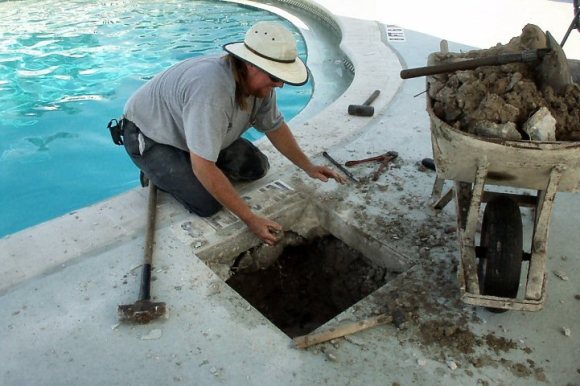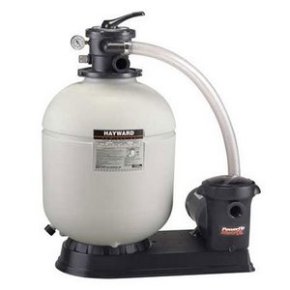“I’m having to add water to my swimming pool each week. Is it necessary a leak?” Depending on the climate near your home, it is not unusual to be losing a 1/4″ of pool water a day due to evaporation. This implies almost 2″ a week! The greatest components affecting this are humidity, wind, and air and water temperature.
To find out if you undoubtedly have a leak in your swimming pool, fill up a bucket with water from the pool and set it on the steps of your pool using the top of the bucket above water level. This will likely keep the water in the bucket precisely the same temperature as the pool. If you do not have steps, you can look at balancing the bucket on the top ladder tread. At this point, compare the water loss between the bucket and your pool during a period of several days, the longer, the better. We’re assuming that your bucket does not have an opening within it! If you notice a change, you’ve got a leak!
Now let’s realize that leak! Fill the swimming pool to the normal level and mark it. A bit of duct tape is fantastic for this. Next with your filter system running the entire time, wait 12 to twenty four hours and measure the decrease of water. Then refill the pool back to the same level and with the filter system off, wait exactly the same period of time (also over the same part of the day, ie. 8 AM to 8 AM or 7 PM to 7 AM) and study the water loss.
If you’re losing more water with the filter system running, the leak is around the pressure side of your plumbing somewhere PAST the impeller of the pump. If you are losing less water using the filter system not running, the leak is on the vacuum side of your plumbing somewhere BEFORE the impeller of the pump. Please note that in this case, most of the time the pool only loses water once the system is off and never when it’s on. If the water loss is identical, then your leak is incorporated in the structure of the pool and not in the plumbing.
Let’s cope with a leak in the plumbing first. We’ll think that there isn’t an obvious leak (one that you can see) on the filter system. Did you check where your backwash line comes out? There are two ways to find this leak. First, you can pressure test the lines, then dig, following the leaking line till you find it. You may also call in your local leak detection service. We’d recommend the latter, unless you like to dig. Professionals will use “geophones” to pay attention for the leak and just dig where necessary!
Now lets consider a leak in the structure of a concrete pool. You will need some food coloring for this, and you’ll wish to switch off the pump at least an hour before you do this. In a concrete pool, any cracks in the shell are usually obvious. By squeezing out the food coloring near the crack, you will see the crack pull the food coloring in. That will show you where the pool is leaking. Yes, you may have to get in the pool to do this, but isn’t that why you got the pool in the first place? If there are no visible cracks, you will want to squeeze out the food coloring around any of the items that pierce the shell of the pool (main drain, returns, lights, etc.). Be sure to check the “mouth” of the skimmer in which the plastic of the skimmer meets the concrete. This area is very susceptible to movement and quite often separates creating a leak.
Once the leak is found, it is easy to fix using a patching material. Many of them works under water. After patching, check again together with your food coloring to make sure you plugged the leak. Take note that if you patch near a fitting, you will want to leave the pump off while it cures, so the flow of water doesn’t wash the patch away.
What if you have a vinyl pool with a leak? A leak can be a little harder to find and fix in a vinyl pool, but it’s not impossible. We would propose that you first check around all the items that pierce the liner (main drain, returns, lights, etc.). If you find that the liner has pulled away or perhaps is leaking behind a fitting, we would Highly recommend that you simply call in the local pool professional at this time. If you mess this repair up you could be easily looking at a new liner!
If you don’t detect a leak around the fittings, you simply must search the liner itself. A lot of vinyl liners have a pattern on the walls or bottom which can make it hard to see a hole. Sometimes by running your hand over the floor and walls you might feel a tear or puncture that’s not easily visible. If you have a friend who is a diver, he or she can do the job a lot easier with a tank than you can by holding your breath. Note: only certified divers should be using diving gear, even in a pool. Sometimes there is a depression on to the floor which might indicate erosion brought on by the flow of water. After locating the leak it is an easy matter to patch, utilizing a vinyl patch kit and following a directions. Click here for awesome pool services.

